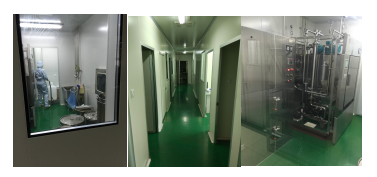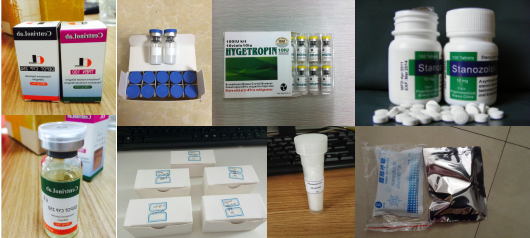Muscle building peptides IGF-1(1-3) for bodybuilder CAS NO.12629-01-5
- FOB Price: USD: 1.00-1.00 /Gram Get Latest Price
- Min.Order: 30 Milligram
- Payment Terms: L/C,D/A,D/P,T/T,
- Available Specifications:
GMP(0.03-0.15)GramGMP(0.15-0.3)Gram
- Product Details
Keywords
- IGF-1
- IGF-1(1-3)
- Fat Loss
Quick Details
- ProName: Muscle building peptides IGF-1(1-3) fo...
- CasNo: 12629-01-5
- Appearance: White powder
- Application: Used in medical research. Pharmaceuti...
- DeliveryTime: 3-7days
- PackAge: Kits,boxs.
- Port: Shang Hai,HongKong,Shenzhen
- ProductionCapacity: 1000 Metric Ton/Month
- Purity: 99.8%
- Storage: Keep in cold storage
- Transportation: TNT,HongKongEMS,EMS,DHL,FeDex,HongKong...
- LimitNum: 30 Milligram
- Related Substances: 0
- Residue on Ignition: 0
- Heavy Metal: 0
- Valid Period: 2years
- Specification: 10iu/vial
Superiority
1.We are the Peptides and Steroids manufacturer in China.We have professional GMPLab and Steroids Factory to control quality.

2.Peptides all from our Labs,So purity is our selling-point.
3.We are for OEM for Clients who have Brands Requirements.
---------------Our four Service------------------

-----------------Our Competitive Advantages ---------------------
1.Rich experience:Our company is a professional production leading factory in China in pharmaceutical area of many years
2.Superior quality, purity and favourable.
Our company is a professional leading manufacturer in China in pharmaceutical area.Good quality is one of our secret success.
3.Safe and fast delivery.
We have GOLDEN FORWARDER and UK Warehouse so we can delivery quickly and safely.
4.Package: Professional packing with professional materials.
5.Competitive Prices : Low price with high qulity.
Details
The Mitogenic Polypeptide Growth Factor That is IGF-1
The Insulin-like Growth factors (IGFs) are mitogenic polypeptide growth factors that stimulate the proliferation and survival of various cell types including muscle, bone, and cartilage tissue in vitro. The liver predominantly produces iGFs, although a variety of tissues produce the IGFs at distinctive times. The IGFs belong to the Insulin gene family, which also contains insulin and relaxin. The IGFs are similar by structure and function to insulin, but have a much higher growth-promoting activity than insulin. IGF-II expression is influenced by placenta lactogen, while IGF-I expression is regulated by growth hormone. Both IGF-I and IGF-II signal through the tyrosine kinase type I receptor (IGF-IR), but, IGF-II can also signal through the IGF-II/Mannose-6-phosphate receptor. Proteolytic processing of inactive precursor proteins, which contain N-terminal and C-terminal propeptide regions, generates mature IGFs. Recombinant human IGF-I and IGF-II are globular proteins containing 70 and 67 amino acids, respectively, and 3 intra-molecular disulfide bonds.
2.Benefits
Why is this IGF-1 important for a bodybuilder or athlete Let’s take a look at the list.
1) Helps regulate fat for use as energy, resulting in fat loss.
2).Contributes to anti aging. As we get older, IGF-1 production slows down and this results in cell reduction. Low levels of IGF-1 are linked to heart failure, lower brain cell regulation and neuron function. Not to mention muscle tissue breakdown.
3).Helps to increase nutrient shuttling (protein synthesis).
4).Increases regenerative functions of nerve tissues.
5).Boosts the ability to cause hyperplasia in muscle cells resulting in fuller muscle Tissue.

IGF-1 Muscle Growth and Fat Loss
Insulin-like growth factor I, also known as mechano growth factor, somatomedin-C, IGF-I and IGF1, is a secreted protein which belongs to the insulin family. The insulin family, comprised of insulin, relaxin, insulin-like growth factors I and II ( IGF-I and IGF-II ) and possibly the beta-subunit of 7S nerve growth factor, represents a group of structurally related polypeptides whose biological functions have diverged. The IGFs, or somatomedins, constitute a class of polypeptides that have a key role in pre-adolescent mammalian growth. IGF-I expression is regulated by growth hormone and mediates postnatal growth, while IGF-II appears to be induced by placental lactogen during prenatal development. IGF-1 is a hormone similar in molecular structure to insulin. It plays an important role in childhood growth and continues to have anabolic effects in adults. A synthetic analog of IGF-1, mecasermin is used for the treatment of growth failure.
Therapeutic administration with neurotrophic proteins (IGF I) is associated with potential reversal of degeneration of spinal cord motor neuron axons in certain peripheral neuropathies. IGF1 / IGF-I may be a physiological regulator of [1-14C]-2-deoxy-D-glucose (2DG) transport and glycogen synthesis in osteoblasts. IGF1 / IGF-I stimulates glucose transport in rat bone-derived osteoblastic (PyMS) cells and is effective at much lower concentrations than insulin, not only regarding glycogen and DNA synthesis but also with regard to enhancing glucose uptake. Defects in IGF1 / IGF-I are the cause of insulin-like growth factor I deficiency (IGF1 deficiency) which is an autosomal recessive disorder characterized by growth retardation, sensorineural deafness and mental retardation.
Why use IGF-1
To put it simply, the gains from IGF-1 (all variants) are not due to water weight, so the gains you will achieve will be long term muscle growth. This is compared to steroids, which are renowned for putting on water weight and giving you nasty side effects. You are not going to gain 10lbs from using IGF-1, but you will see solid 1-2lbs gains every 1-2 weeks.
The most important factor to consider is IGF-1’s ability to achieve hyperplasia. When you use steroids, they will help the body through hypertrophy, which means you are increasing the size of the existing muscle cells. On the other hand, IGF-1 will cause hyperplasia, which means you are actually increasing the number of cells in the muscle tissue. These new cells can be utilized through further training, and use of steroids, to make bigger muscles. Essentially, you will have the ability to achieve more muscle density and size at the genetic level by using IGF-1.

Variants
IGF-1 variants are split into two groups: IGF-1 LR3 and DES IGF-1 (usually presented as IGF-1 DES). Base IGF-1 has a very short half life (about 10-20 minutes); as a result, it is quickly destroyed by the body. This is why IGF-1 was modified to make the amino acid analog IGF-1 LR3 (Long). The other variant of IGF-1 called DES IGF-1 is a truncated version that is 10X more potent than IGF-1. Both variants are similar to its root but have different actions, allowing them to function in a specific ways.
Our company specialize in Steriods and Peptides.(Giant Factory and Labs)
And our Target Clients is Labs and Research Projects and even some Bodybuilders and some Trading companies.
We are professional synthetize in Peptides and Steroids,any quiries,do not hesitate to contact me!
Thanks.





